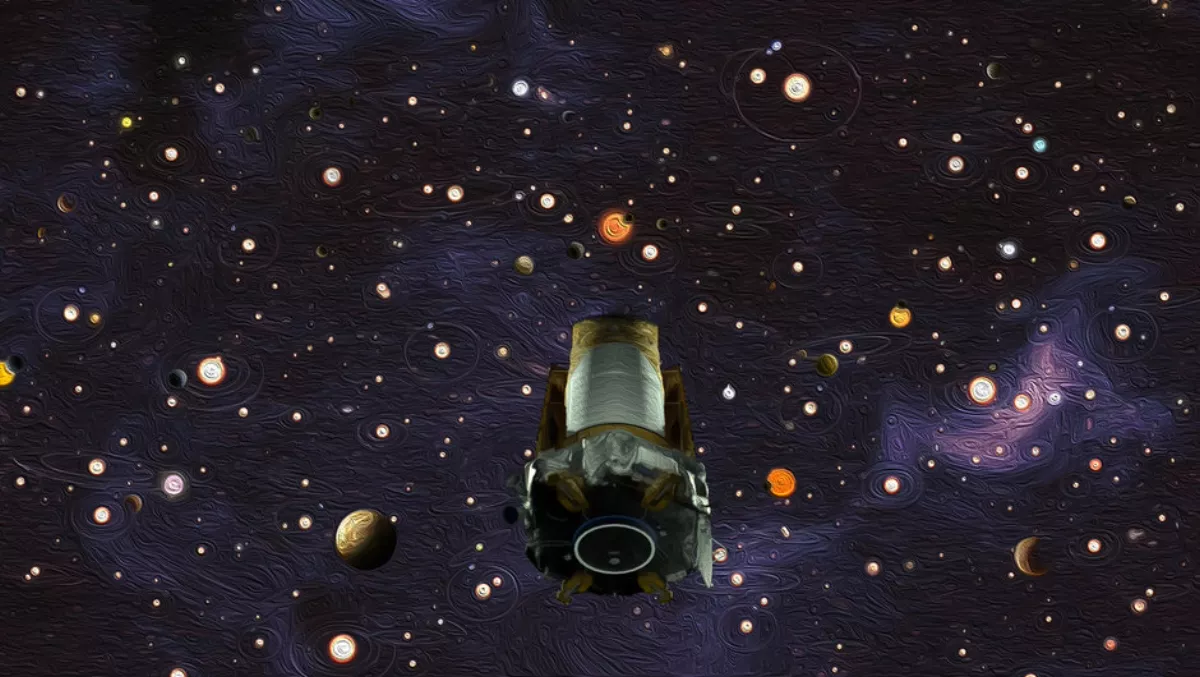
These were the voyages of the Kepler space telescope
These were the voyages of the Kepler space telescope. Yes, after nine years exploring deep space, NASA's spacecraft and telescope will now be another piece of historical space junk.
NASA says the telescope has 'run out of fuel needed for further science operations', so it's retiring the spacecraft within its current safe orbit that's away from Earth.
Since 2009 the telescope has played a massive role in exploring places outside of the solar system – in fact, it has discovered more than 2600 planets, many of which could possibly support life.
"When we started conceiving this mission 35 years ago we didn't know of a single planet outside our solar system," said the Kepler mission's founding principal investigator, William Borucki.
"Now that we know planets are everywhere, Kepler has set us on a new course that's full of promise for future generations to explore our galaxy."
Kepler was originally positioned to watch 150,000 stars in a patch of sky within the constellation Cygnus. It then took the first survey of planets in the galaxy and became NASA's first mission to detect Earth-size planets in the habitable zones of their stars.
It discovered that around 20%-50% of start visible in the night sky are likely to have planets that may well be similar to Earth's own. Although not confirmed, they may also be able to harbour liquid water – a vital ingredient to life.
It also found solar systems so busy with planets that even NASA admits our own inner solar system looks sparse in comparison.
"As NASA's first planet-hunting mission, Kepler has wildly exceeded all our expectations and paved the way for our exploration and search for life in the solar system and beyond," says NASA Science Mission Directorate's associate administrator, Thomas Zurbuchen.
"Not only did it show us how many planets could be out there, it sparked an entirely new and robust field of research that has taken the science community by storm. Its discoveries have shed a new light on our place in the universe, and illuminated the tantalising mysteries and possibilities among the stars.
But the mission was not without its hiccups – in 2013, mechanical failures stopped Kepler's observations. The fixes actually extended the life of the spacecraft, and allowed Kepler to survey more than 500,000 stars.
"The Kepler mission was based on a very innovative design. It was an extremely clever approach to doing this kind of science," says director for astronomy and physics at NASA's Jet Propulsion Laboratory, Leslie Livesay.
"There were definitely challenges, but Kepler had an extremely talented team of scientists and engineers who overcame them.
NASA says scientists have made discoveries at an incredible pace, and the data from Kepler will keep them going for at least the next decade.
"We know the spacecraft's retirement isn't the end of Kepler's discoveries," says, Kepler's project scientist at NASA's Ames Research Center, Jessie Dotson.
"I'm excited about the diverse discoveries that are yet to come from our data and how future missions will build upon Kepler's results."
Kepler was replaced by the Transiting Exoplanet Survey Satellite (TESS), which was launched in April.


